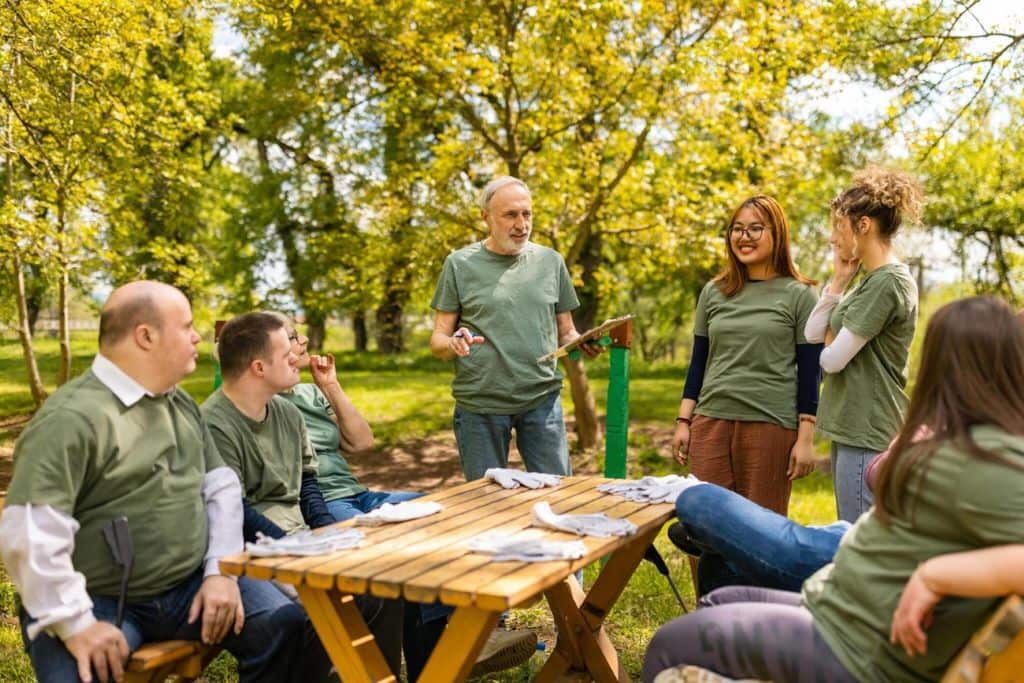In today’s healthcare landscape, the importance of holistic approaches to patient care is widely recognized. Beyond medical treatments, healthcare providers are increasingly focusing on promoting overall well-being and quality of life for patients.
One area where this holistic approach is particularly evident is in the integration of outdoor wellness programs within healthcare facilities. These programs leverage the therapeutic benefits of nature to enhance patients’ physical, mental, and emotional health.
Community property landscaping plays a pivotal role in elevating these outdoor wellness programs by creating inviting and functional outdoor environments. In this comprehensive article, we will delve into how community property landscaping enhances outdoor wellness programs.
Key Elements of Community Property Landscaping
In community property landscaping, every element is carefully orchestrated to create an outdoor environment that not only looks beautiful but also serves a multitude of purposes.
- Aesthetic Design: Community property landscaping focuses on creating visually appealing outdoor spaces that harmonize with the surrounding environment. This includes the selection of plants, trees, and hardscape elements that enhance the overall aesthetics of the area.
- Functional Layout: In addition to aesthetics, community property landscaping prioritizes functionality. Outdoor spaces are designed to accommodate a variety of activities and purposes, from relaxation and recreation to therapeutic interventions and social gatherings.

- Sustainable Practices: Community property landscaping often incorporates sustainable practices to minimize environmental impact and promote ecological balance. This may include the use of native plants, water-efficient irrigation systems, and environmentally friendly materials.
- Accessibility: Outdoor spaces within healthcare facilities must be accessible to patients of all abilities. Community property landscaping takes into account accessibility considerations, such as wheelchair ramps, pathways with non-slip surfaces, and designated seating areas for individuals with mobility challenges.
Benefits of Outdoor Wellness Programs
Before we explore how community property landscaping enhances outdoor wellness programs, let’s briefly review the benefits of such programs for patients:
- Improved Mental Health: Spending time outdoors has been shown to reduce stress, anxiety, and depression. Outdoor wellness programs provide patients with opportunities for relaxation, mindfulness, and emotional healing.
- Enhanced Physical Health: Outdoor activities encourage physical movement, leading to improved cardiovascular health, muscle strength, and overall fitness. Patients participating in outdoor wellness programs may engage in activities such as walking, gardening, or yoga.
- Social Interaction: Outdoor spaces provide opportunities for patients to interact with one another and form supportive relationships. Socialization is essential for combating feelings of loneliness and isolation, particularly for patients in healthcare settings.
- Connection with Nature: Being in natural environments fosters a sense of connection with the natural world, promoting feelings of peace, tranquility, and awe. Patients benefit from the therapeutic effects of nature, including reduced blood pressure, lowered cortisol levels, and improved mood.
- Stress Reduction: Outdoor wellness programs offer patients respite from the clinical environment of healthcare facilities. Spending time in nature allows patients to escape from the stresses of illness and treatment, promoting relaxation and rejuvenation.

Landscaping Enhances Outdoor Wellness Programs
Now that we have established the importance of outdoor wellness programs and the fundamentals of community property landscaping, let’s explore how community property landscaping enhances these programs:
Creating Tranquil Environments
One of the primary objectives of community property landscaping is to create tranquil outdoor environments that promote relaxation and stress relief. By incorporating elements such as lush greenery, water features, and natural materials.
It can transform outdoor spaces into peaceful retreats for patients. These tranquil environments serve as sanctuaries where patients can escape from the hustle and bustle of the clinical setting.
Encouraging Physical Activity
It plays a crucial role in encouraging patients to engage in physical activity, which is essential for maintaining overall health and well-being. By designing outdoor spaces that facilitate movement and exercise, healthcare facilities can promote physical fitness among patients.
This may include the incorporation of walking paths, exercise stations, and recreational areas where patients can participate in various activities.
Promoting Social Interaction
Community property landscaping creates opportunities for patients to interact with one another and build supportive relationships. By incorporating communal gathering spaces such as picnic areas, garden plots, and outdoor seating arrangements,
These shared spaces encourage socialization, collaboration, and the exchange of experiences and perspectives.
Connecting with Nature
It allows patients to connect with nature and experience its therapeutic benefits without having to leave the healthcare facility. By incorporating elements such as gardens, green spaces, and natural habitats, healthcare facilities provide patients with opportunities to immerse themselves in the beauty of the outdoors.
Whether it’s enjoying the sights and sounds of a garden or observing wildlife in its natural habitat, patients can experience the restorative effects of nature firsthand.
Supporting Therapeutic Activities
Community property landscaping supports various therapeutic activities aimed at improving patients’ physical, mental, and emotional well-being. It involves engaging patients in gardening activities as a means of promoting relaxation, sensory stimulation, and skill-building.
By incorporating therapeutic gardens, outdoor activity areas, and sensory landscapes, healthcare facilities offer patients opportunities for hands-on participation in therapeutic activities that support their recovery and rehabilitation.

Conclusion
In essence, community property landscaping enhances outdoor wellness programs by transforming outdoor spaces into therapeutic landscapes that promote healing, resilience, and empowerment. By embracing these principles and practices, healthcare facilities can truly optimize patient care and contribute to the well-being of individuals and communities alike.
As we continue to prioritize holistic approaches to healthcare, the integration of outdoor wellness programs supported by community property landscaping will undoubtedly play a vital role in shaping the future of patient care.




